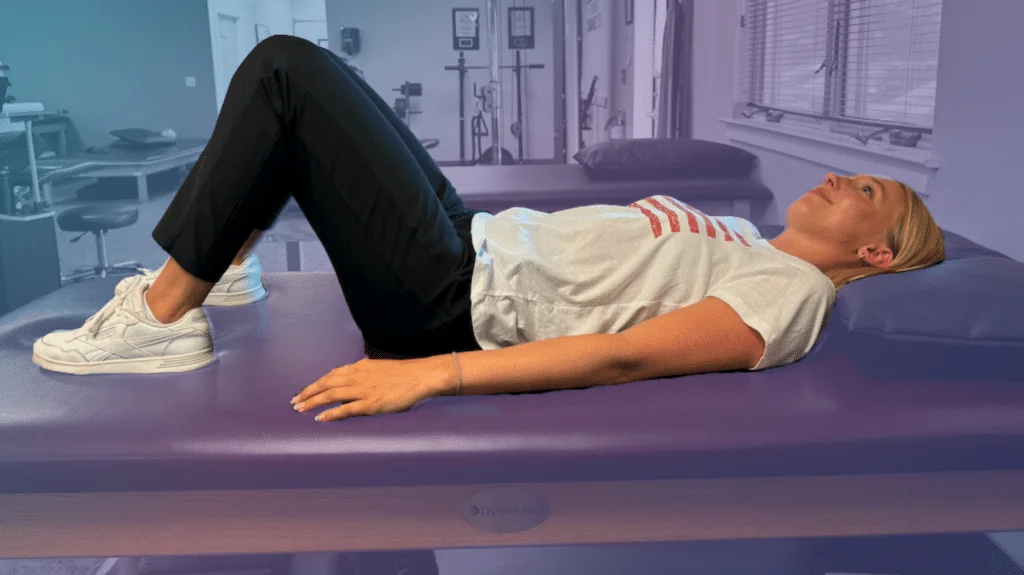Hip pain is common among all age groups and activity levels. A recent study shows hip pain injuries represent 28% to 45% of injuries in women and 49% to 55% in men. In fact, hip pain can be a debilitating issue that affects your daily activities, from walking and sitting to enjoying your favorite sports and hobbies. Whether caused by injury, overuse, or conditions like arthritis, hip pain can limit your mobility and reduce your quality of life. However, physical therapy exercises can be an effective way to alleviate discomfort and improve hip function.
In this blog, we’ll explore a variety of targeted exercises designed to strengthen the muscles around your hip, enhance flexibility, and promote healing. By incorporating these exercises into your routine, you can take significant steps toward managing and overcoming hip pain.
Common Causes of Hip Pain
The location of the hip pain can help determine the exact cause of your discomfort. Pain in the groin area can often signify a core muscle injury or a pelvic floor issue. Core injuries are usually the result of overusing or straining the muscles or soft tissues in the hip, groin, or abdomen during rigorous physical activity. Injuries like this can cause pain in the hip when the root problem could be somewhere else.
Another common hip condition that often develops with age is bursitis. Bursitis occurs when fluid-filled sacs surrounding and protecting your hip joint become irritated or inflamed. This condition results in pain that can be constant regardless of whether you move your hip or stay still.
Highly active individuals are prone to hip injuries or conditions like tendonitis or hip impingements. Tendonitis can occur when the tendons are strained or overused, especially when individuals participate in activities that involve repetitive motions. Hip impingements are also very common in highly active patients but typically develop at a younger age when intense physical activities cause a patient’s hip bones to develop improperly. Not only can this cause pain and loss of mobility, but it can also increase the risk of other hip conditions if left untreated.
Hip fractures are another common cause of severe hip pain and are often the result of a fall or a traumatic impact injury. The risk for hip fractures increases with age as the bones become more brittle and weaker. If left untreated, hip fractures can result in conditions like avascular necrosis, in which the blood supply to the hip bones decreases, resulting in bone tissue death. Discovering the cause of hip pain is the first step to recovery and finding solutions that work for you.
Low-Impact Exercises for Hip Pain
Maintaining movement is crucial for healing hip injuries, but there’s no one-size-fits-all approach. Listening to your body and incorporating movement that feels good for you is essential. Simple activities like walking or stretching are practical ways to stay active and recover from a hip injury. Walking can be done indoors or outdoors, but some patients find that using a treadmill can be safer, especially if the injury creates balance problems.
Stretching or yoga exercises are another way to stay active while strengthening muscles and increasing range of motion. Swimming is another low-impact exercise that can help with hip pain. Swimming is an excellent way to build strength and gain flexibility without placing too much strain on the hip joints or muscles. Additionally, low-impact exercises like the ones listed below are perfect for beginning the recovery process:
- Glute Bridges: Begin by laying on your back with your knees bent and feet flat. Squeeze your glutes and engage your core, then lift your butt off the table. Hold 3-5 seconds at the top of your range and then slowly bring the butt back to the table. Keep the glute and core engaged until you are finished with the movement! Try 20 reps with breaks as needed.
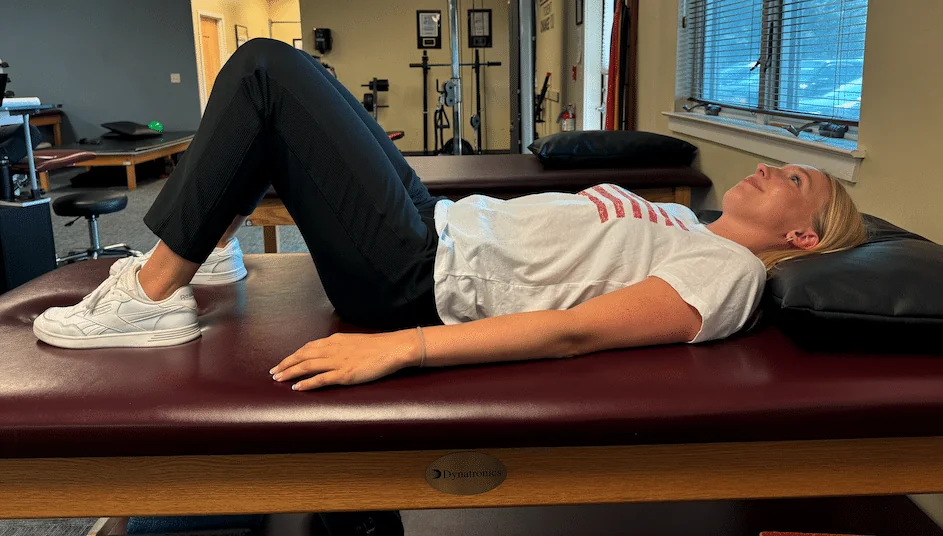
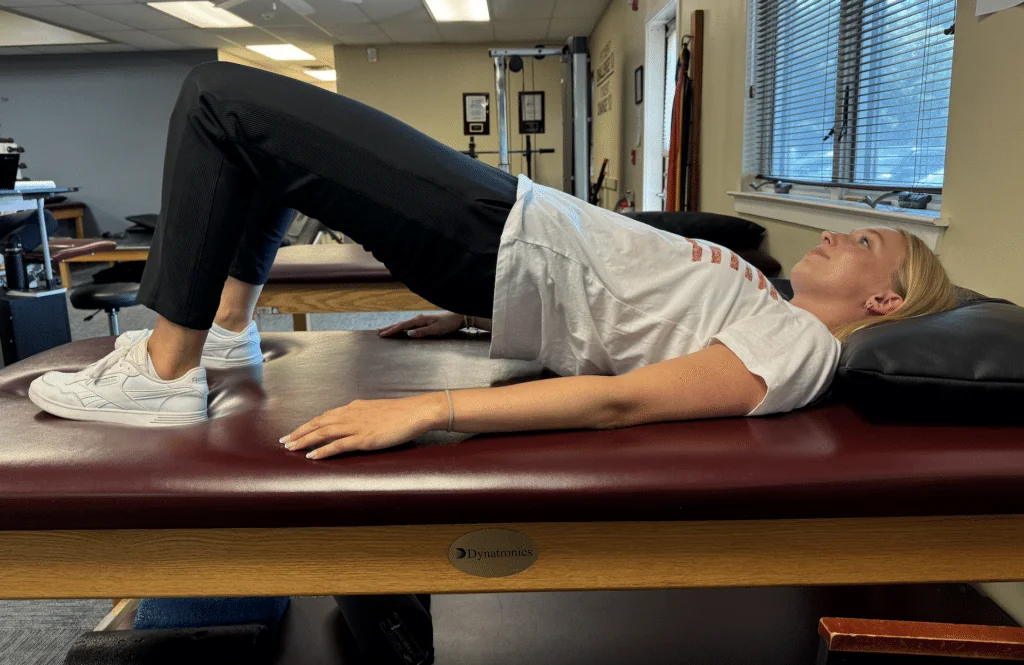
- Straight Leg Raise: Lay on your back with one knee bent, your foot flat, and the other leg straight. Begin by engaging the muscle on the top of your upper leg (quads) and lift the straight leg off the table to a height just below the opposite knee. Hold in place for 2-3 seconds and slowly bring the leg back toward the table.
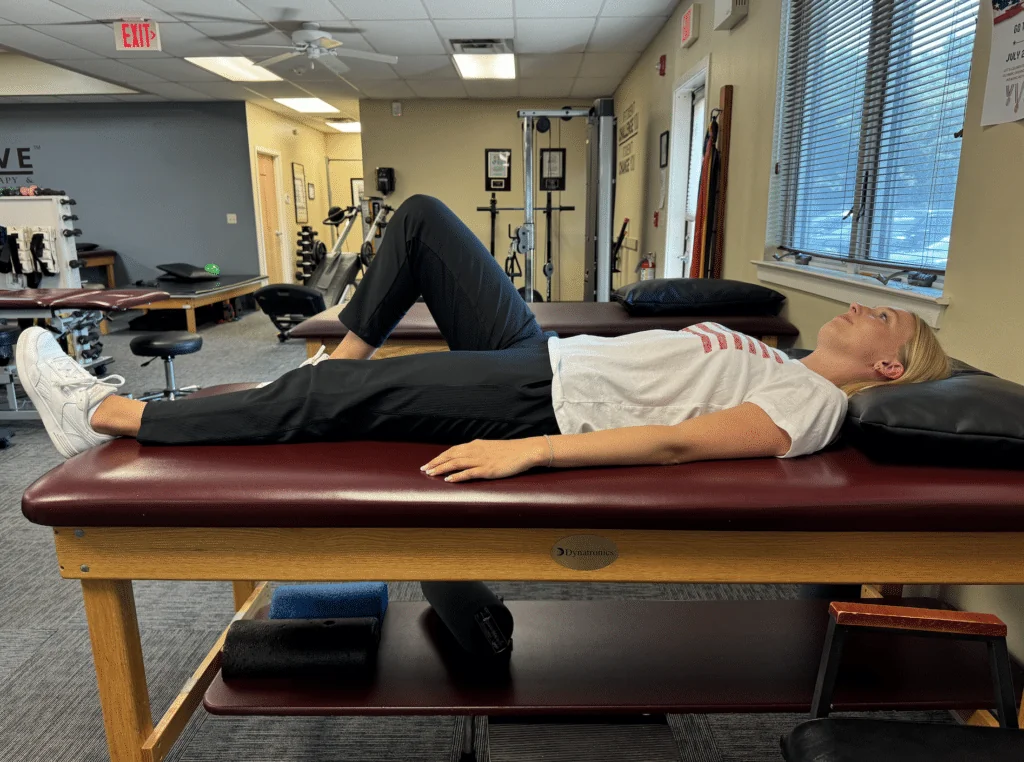
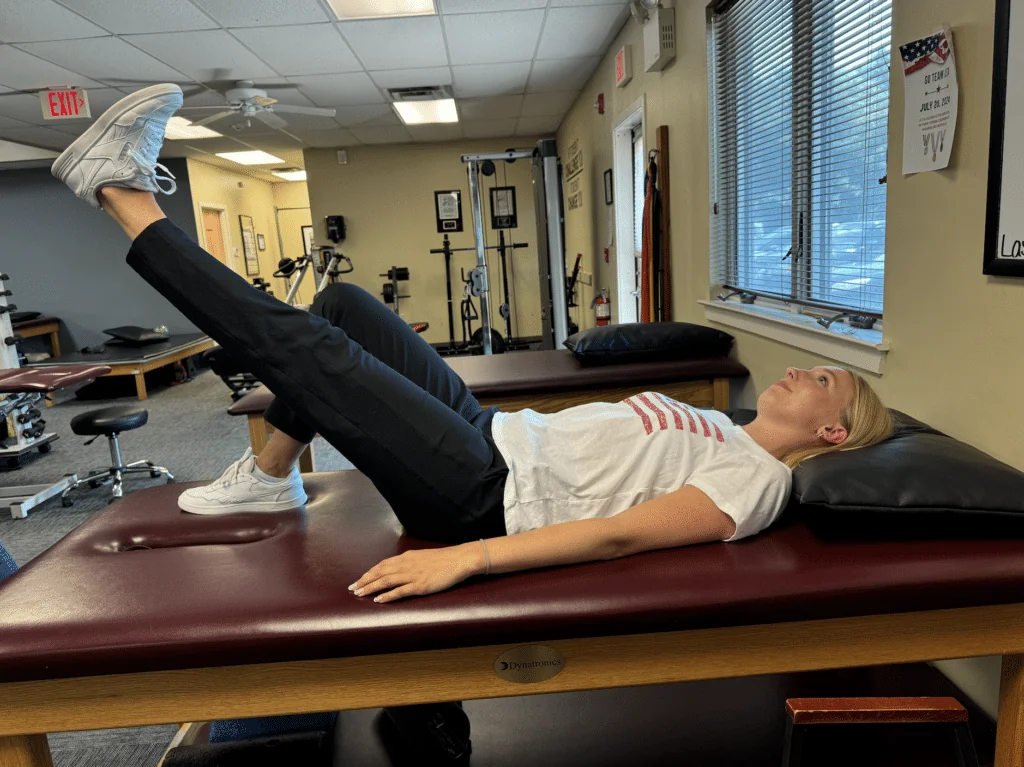
- Clamshell: Begin by laying on your side with your knees bent and legs stacked on each other. Keep your hips stacked and feet together, and lift the top knee toward the sky. Hold at the top for 2-3 seconds and bring back toward your other knee. Be sure not to rotate backward while doing this! Make sure you switch to the other side as well. If you need to make this more challenging, add a resistance band!
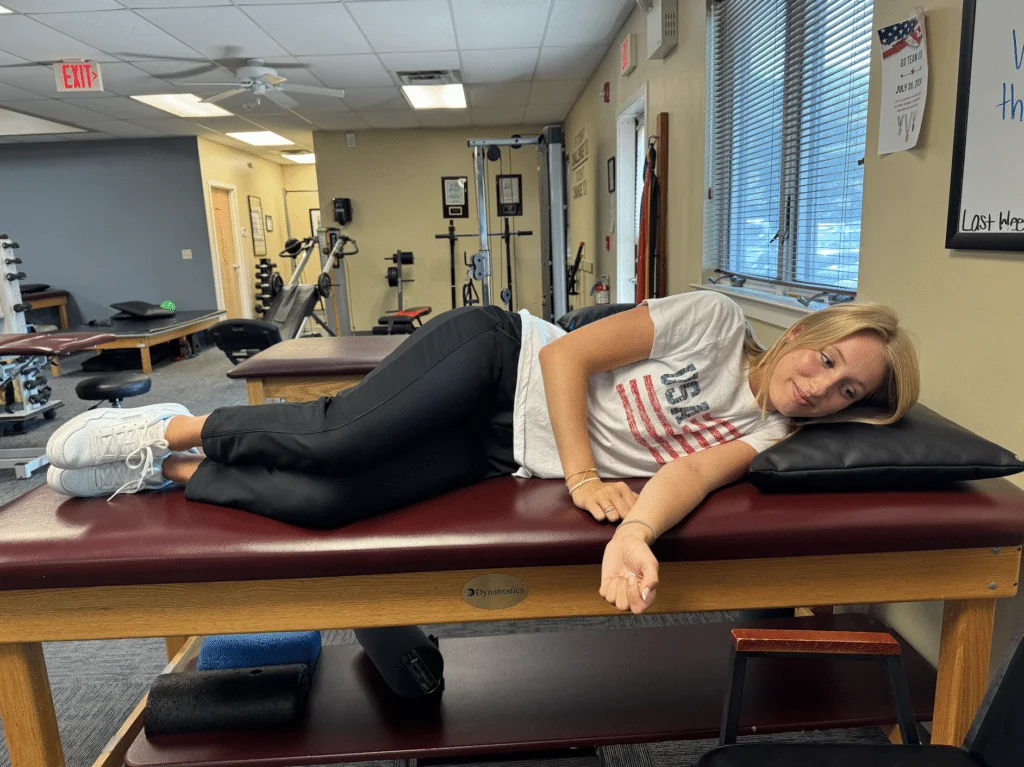
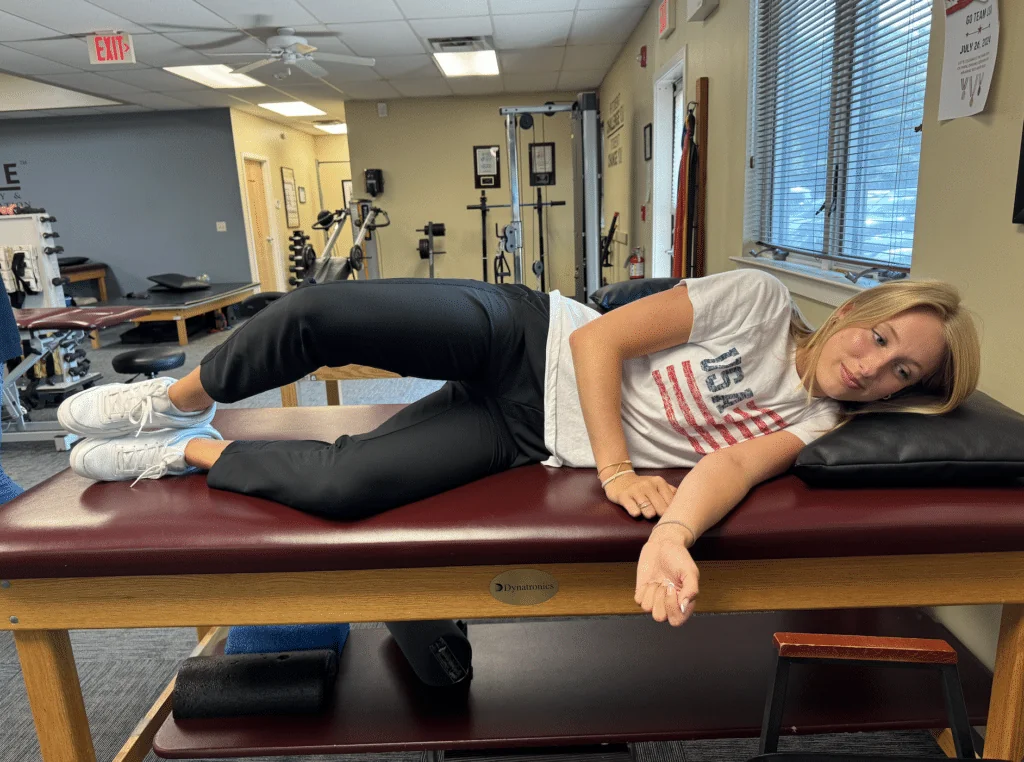

Relieve Chronic Hip Pain Through Stretching
Stretching can help relieve hip pain, regardless of the cause. However, some stretches can increase pain or irritate a preexisting condition if done incorrectly. Physical therapy is an excellent first step to recovery and will help you learn how to reduce chronic pain and prevent re-injury. Your physical therapist will provide a helping hand to guide you through strengthening your hips, increasing mobility and function while decreasing pain, and allowing you to return to a healthy and active lifestyle. Try these simple stretches at home:
- Piriformis Stretch: Lay on your back with one knee bent and foot flat, with the other leg crossed, so your ankle rests on your opposite knee. Then use your hands or a strap to pull the knee toward the opposite shoulder until you feel a stretch in your butt. Hold 10 seconds and perform ten reps. Make sure you switch to the other side!
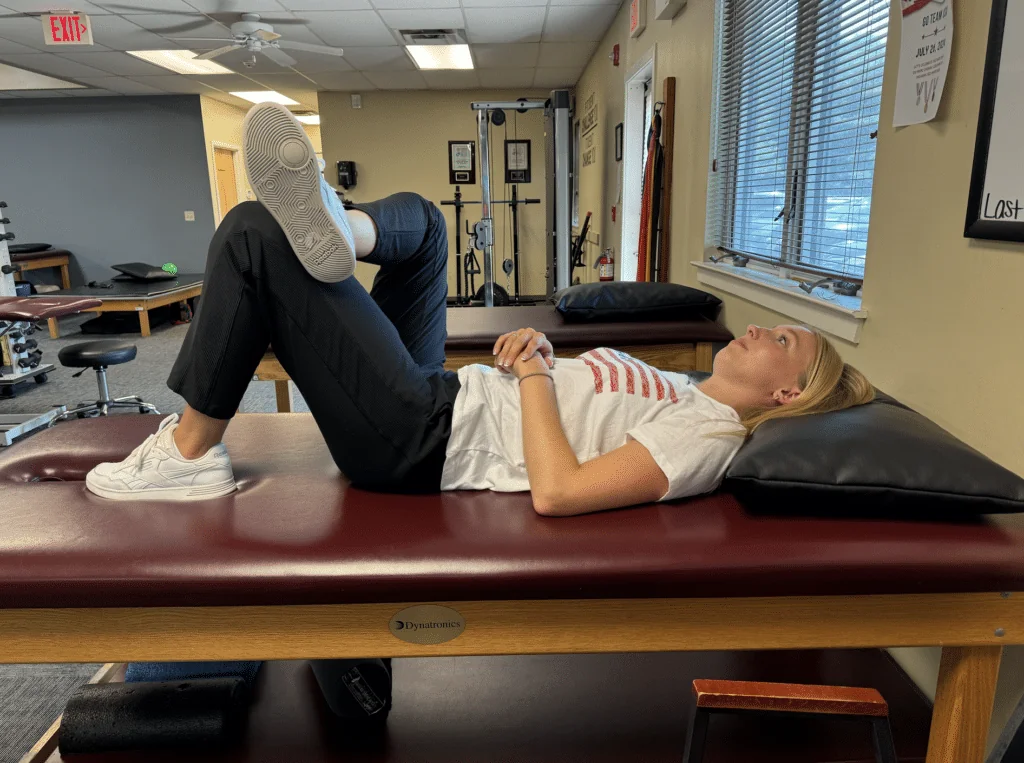

- Single Knee to Chest: Lay on your back with both legs straight. Bend one knee and use your hands to pull the knee toward your chest. Once you feel a stretch in your butt, hold for 10 seconds. Slowly release your leg back down. Repeat 10x on both legs!
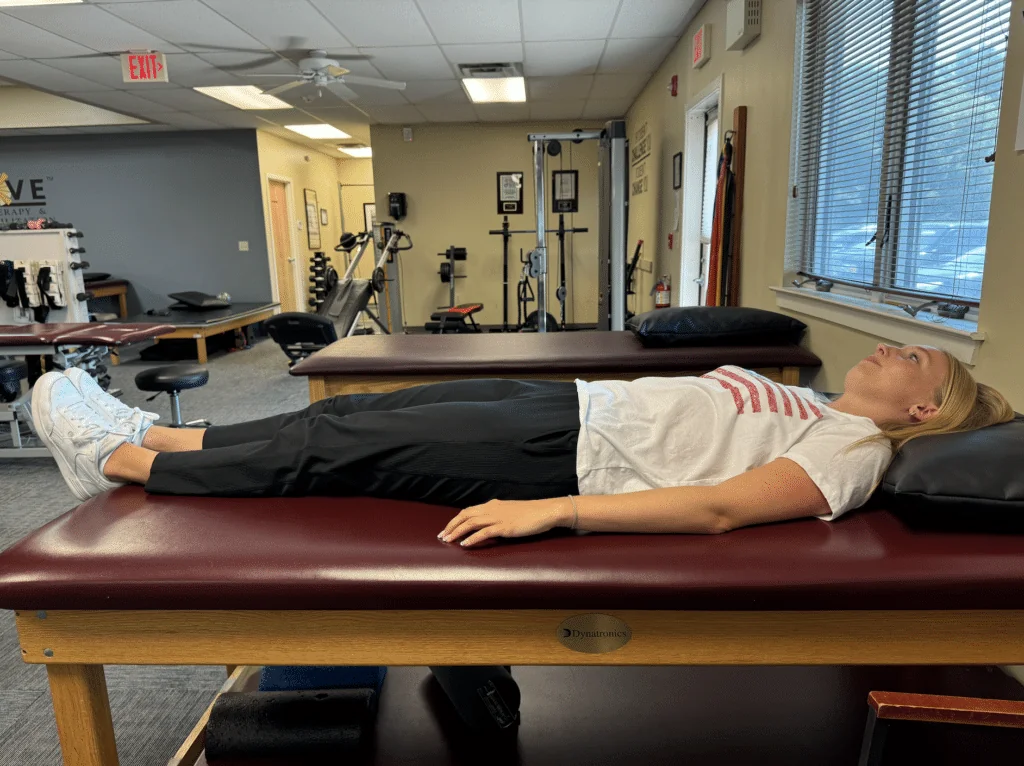
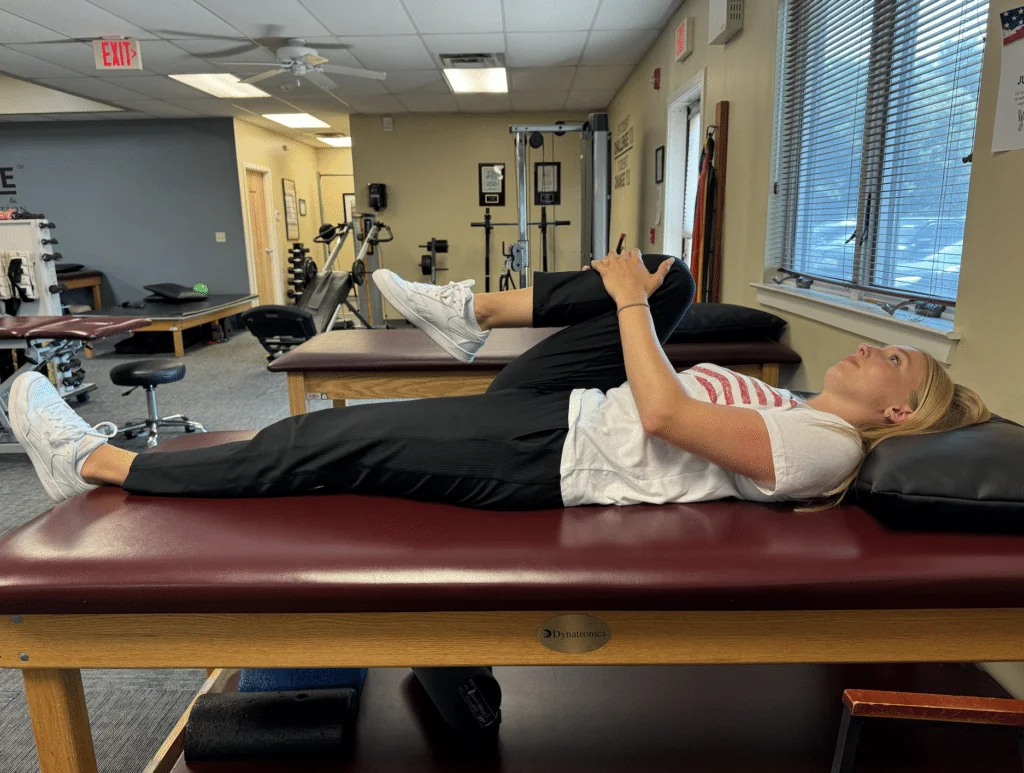
- Hamstring Stretch: Lay on your back with both legs straight. Bend one knee and use your hands to grab behind the knee. Keep holding your knee and begin to straighten your knee until you feel a stretch in the back of your leg (hamstrings). Hold for 5-10 seconds, then slowly bend your knee again. Repeat 10x on each leg. Use a strap around your foot or knee to help stretch if you have difficulty reaching your knee with your hands.
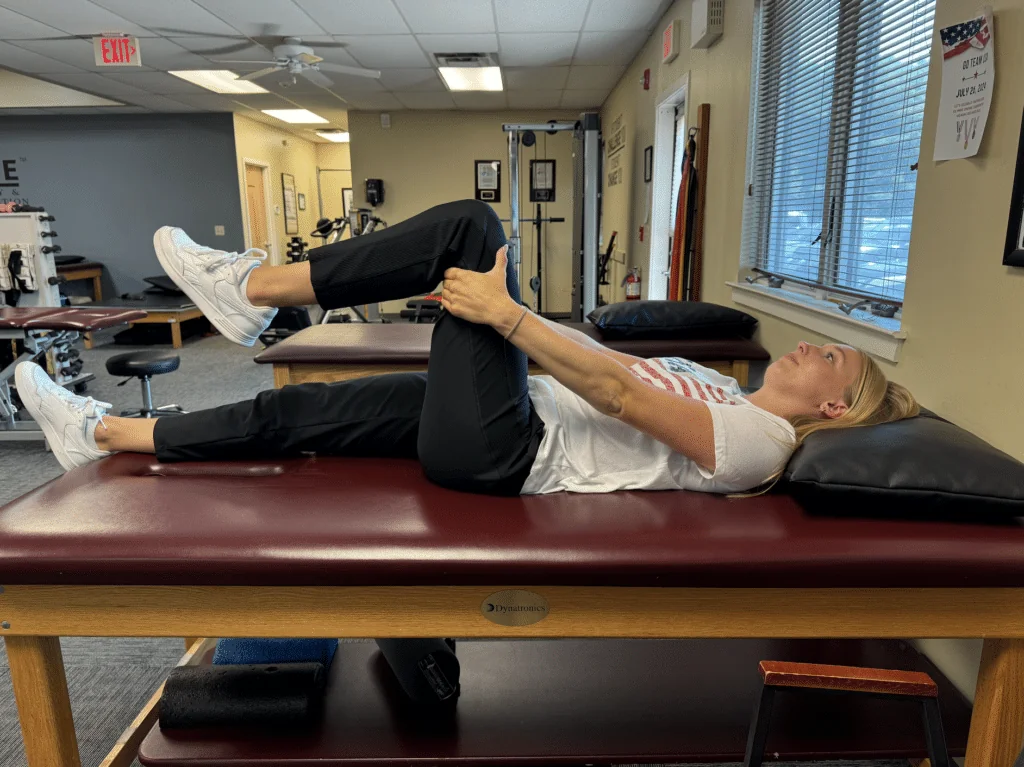
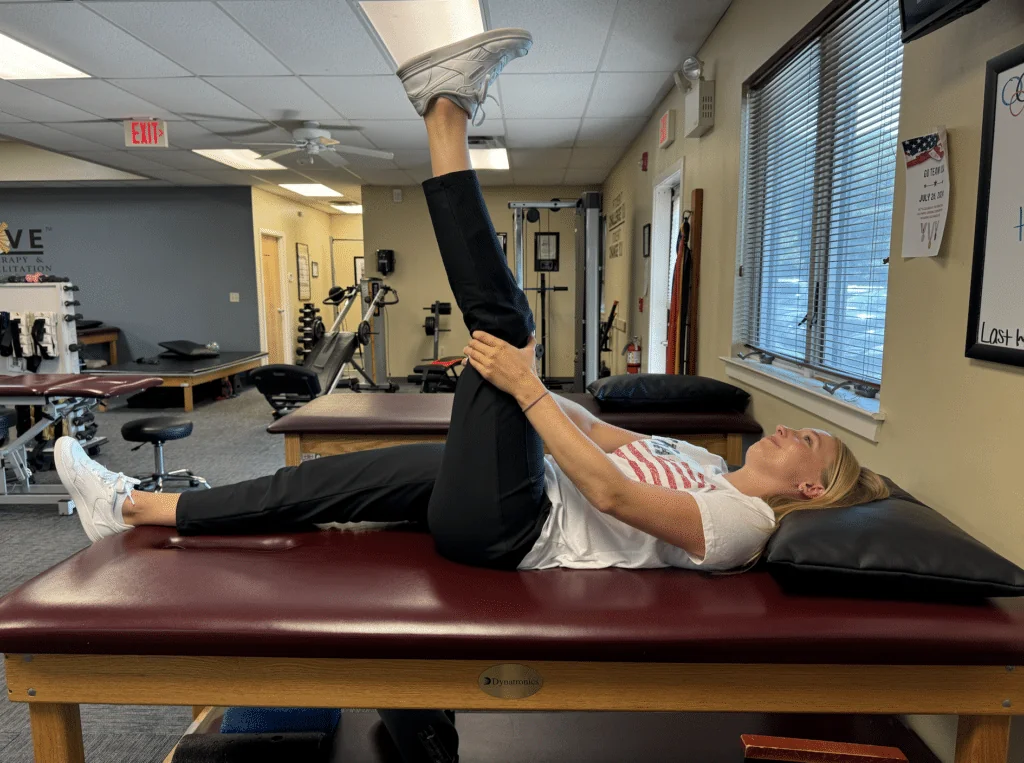
How a PT Can Help
Physical therapists play a crucial role in managing hip pain and getting to the root cause of the pain. Here’s how a PT can help:
- Personalized Exercise Programs: Physical therapists can design tailored exercise regimens for hip mobility and strengthening.
- Assess: Physical therapists can assess all areas of your hip and back and check for various limitations keeping you from doing things you love!
- Educate: Physical therapists can help educate you on your injury and pain and come up with proactive ways to avoid re-injury
Schedule an Appointment
If you’re experiencing persistent hip pain, don’t ignore it. Use our interactive map tool to find a physical therapist in your area. We are dedicated to helping you regain mobility and live a healthier, more active life. Schedule an appointment today and take the first step towards recovery.

